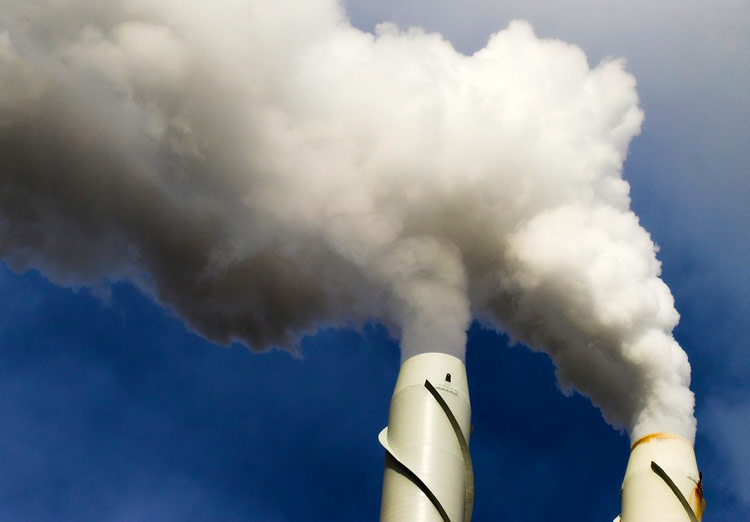Ireland’s ambition to move towards the health-based World Health Organization (WHO) air quality guidelines will be challenging, but will have a significantly positive impact on health.
- Air quality in Ireland is generally good, however, there are concerning localised issues.
- Ireland met all of its EU legal requirements in 2022, but it did not meet the more stringent health-based World Health Organisation (WHO) Air Quality guidelines.
- It is estimated that there are approximately 1,300 premature deaths annually in Ireland due to poor air quality from fine particulate matter (PM2.5).
- The choices we make in how we heat our homes and how we travel directly impact the quality of the air we breathe.
The Environmental Protection Agency (EPA) has today published its annual air quality report ‘Air Quality in Ireland 2022’. The report shows that, while air quality in Ireland is generally good and compares favourably with many of our European neighbours, there are concerning localised issues which lead to poor air quality.
Ireland met EU legal air quality limits in 2022, however it did not meet the more stringent health-based World Health Organization (WHO) air quality guidelines for a number of pollutants including: particulate matter (PM), nitrogen dioxide (N02), sulphur dioxide (SO2) and ozone (O3), due mainly to the burning of solid fuel in our towns and villages and traffic in our cities.
Poor air quality has a proven negative impact on people’s health. There are an estimated 1,300 premature deaths in Ireland per year due to particulate matter in our air.
In 2022 air monitoring results from EPA stations across Ireland show that fine particulate matter (PM2.5), mainly from burning solid fuel in our homes, and nitrogen dioxide (NO2) mainly from road traffic, remain the main threats to good air quality. High levels of these pollutants are often associated with cold, still weather from late autumn through to early spring, when generally short-term incidents of poor air quality occur.
Launching the report, Dr Micheál Lehane, Director of the EPA’s Office of Radiation Protection & Environmental Monitoring, said: “The EPA’s air quality monitoring has shown that Ireland met all of its EU legal requirements in 2022. However, we did not meet the World Health Organisation (WHO) air quality guidelines for health. This highlights the immediate challenge to move towards the WHO air quality guidelines in the Clean Air Strategy. While undoubtably challenging, the significantly positive impacts of clean air on health are clear and the report identifies some of the actions that are necessary to achieve the health-based air quality guidelines.”
The report identifies that using less solid fuel and cleaner fuels to heat our homes, and reducing our use of cars to go to school, work and play; are actions that will contribute towards achieving the WHO guidelines.
The report further identifies the critical role for local authorities in enforcement, implementation of existing plans and investment in infrastructure to encourage cleaner and healthier air quality choices:
- Local authorities must provide more resources to increase air enforcement activities and implement the new solid fuel regulations.
- Dublin local authorities must fully implement the Dublin Region Air Quality Plan 2021, to improve Nitrogen Dioxide levels in Dublin Region.
- Investment in clean public transport infrastructure across the country must be maintained and increased.
- More safe footpaths and cycle lanes must be created to continue to increase active travel as a viable and safe alternative to car use and associated nitrogen dioxide emissions.
Mr Pat Byrne, EPA Programme Manager, said: “The localized issues that we see in the 2022 monitoring results impact negatively on air quality and health. Monitoring stations across Ireland recorded high levels of particulate matter associated with burning solid fuels in our towns and villages and high levels of nitrogen dioxide in our larger cities associated with road traffic. We can have immediate impacts on our local air quality by making changes in how we heat our homes and finding alternative ways to travel. These actions which also have positive climate impacts”.
To find out more about how we can improve air quality, read the EPA’s How we can improve the air we breathe infographic or check out the ‘ABC for Cleaner Air’ campaign@ The ABC for Cleaner Air , from the Department of Environment, Climate and Communications, which highlights some simple steps we can all make and help reduce pollution from solid fuels.
The Air Quality in Ireland 2022 report is available on the EPA website.
The EPA continually monitors air quality across Ireland and provides the air quality index for health and real-time results online HERE.
Results are updated hourly on the website, and people can log on at any time to check whether the current air quality is good, fair or poor.


Leave a Reply